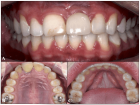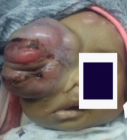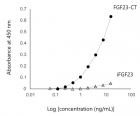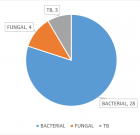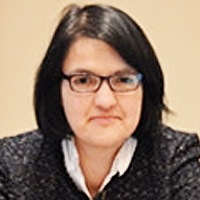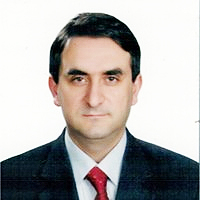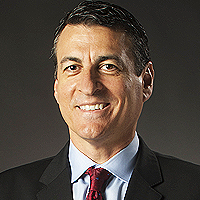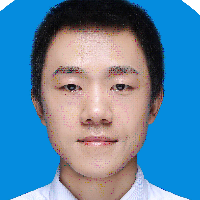Abstract
Mini Review
Thrombolysis, the only Optimally Rapid Reperfusion Treatment
Victor Gurewich*
Published: 23 June, 2017 | Volume 2 - Issue 1 | Pages: 029-034
Thrombolysis with tissue plasminogen activator (tPA) has been plagued by inadequate efficacy and a high risk of intracranial hemorrhage (ICH), which led to its replacement by procedures like percutaneous coronary intervention (PCI) whenever possible. Since this requires hospitalization, it is time-consuming, and compromising salvage of brain tissue and myocardium. Thrombolysis is the only first-line treatment that can provide sufficiently timely treatment for optimal recovery of organ function. However, for this potential to be realized, its efficacy and safety must be significantly improved over the current method. By adopting the sequential, synergistic fibrinolytic paradigm of the endogenous system, already verified by a clinical trial, this becomes possible. The endogenous system’s function is evidenced by the fibrinolytic product D-dimer that is invariably present in blood, and which increases >20-fold in the presence of thromboembolism. This system uses tPA to initiate lysis, which is then completed by the other fibrin-specific activator prourokinase (proUK). Since tPA and proUK in combination are synergistic in fibrinolysis, it helps explain their efficacy at their low endogenous concentrations.
Read Full Article HTML DOI: 10.29328/journal.jccm.1001010 Cite this Article Read Full Article PDF
References
- GISSI-2: a factorial randomised trial of alteplase versus streptokinase and heparin versus no heparin among 12,490 patients with acute myocardial infarction. Gruppo Italiano per lo Studio della Sopravvivenza nell'Infarto Miocardico. Lancet. 1990; 336: 65-71. Ref.: https://goo.gl/5BcND7
- ISIS-3: a randomised comparison of streptokinase vs tissue plasminogen activator vs anistreplase and of aspirin plus heparin vs aspirin alone among 41,299 cases of suspected acute myocardial infarction. ISIS-3 (Third International Study of Infarct Survival) Collaborative Group. Lancet 1992; 339: 753-770. Ref.: https://goo.gl/cNYjDk
- GUSTO Investigators. An international randomized trial comparing four thrombolytic strategies for acute myocardial infarction. N Eng J Med 1993; 329: 673-682. Ref.: https://goo.gl/tDc4Tb
- Brophy JM, Joseph L. Placing trials in context using Bayesian analysis. GUSTO revisited by Reverend Bayes. JAMA 1995; 273: 871-875. Ref.: https://goo.gl/j3PpnF
- Voskuilen M, Vermond A, Veeneman GH, van Boom JH, Klasen EA. Fibrinogen lysine residue Aα157 plays a crucial role in the fibrin-induced acceleration of plasminogen activation, catalyzed by tissue-type plasminogen activator. J Biol Chem. 1987; 262; 5944-5946. Ref.: https://goo.gl/HNvZ3H
- Hoylaerts M, Rijken DC, Lijnen HR, Collen D. Kinetics of the activation of plasminogen by human tissue plasminogen activator. Role of fibrin. J Biol Chem. 1982; 257: 2912-2919. Ref.: https://goo.gl/jFRdfA
- Liu JN, Gurewich V. A comparative study of the promotion of tissue plasminogen activator and pro-urokinase-induced plasminogen activation by fragments D and E-2 of fibrin. J Clin Invest. 1991; 88: 2012-2017. Ref.: https://goo.gl/NohYzy
- Suenson E, Lützen O, Thorsen S. Initial plasmin-degradation of fibrin as the basis of a positive feed-back mechanism in fibrinolysis. Eur J Biochem. 1984; 140: 513-5229. Ref.: https://goo.gl/nucZSA
- Marder VJ, Sherry S. Thrombolytic therapy: current status. N Engl J Med 1988; 318: 1512-1520. Ref.: https://goo.gl/pComu6
- Boersma E, Maas ACP, Deckers JW, Simoons ML. Early thrombolytic treatment in acute myocardial infarction: reappraisal of the golden hour. Lancet. 1996; 348: 771-775. Ref.: https://goo.gl/LK4akV
- Schofield PM. Acute myocardial infarction: the case for pre-hospital thrombolysis with or without percutaneous coronary intervention. Heart. 2005; 91: 7-11. Ref.: https://goo.gl/YTrUh8
- Collen D. The plasminogen (fibrinolytic) system. Thromb Haemost. 1999; 82: 259-270. Ref.: https://goo.gl/y7fZSc
- Chandler WL, Jascur ML, Henderson PJ. Measurement of different forms of tissue plasminogen activator in plasma. Clin Chem. 2000; 46: 38-46. Ref.: https://goo.gl/J2j26v
- Baglin TP, Landown R, Frasson R, Huntington JA. Discovery and characterization of an antibody directed against exosite 1 of thrombin. J Thromb Haemos. 2016; 4: 137-142. Ref.: https://goo.gl/EJJEmS
- Pannell R, Black J, Gurewich V. The complementary modes of action of tissue plasminogen activator (t-PA) and pro-urokinase (pro-UK) by which their synergistic effect on clot lysis may be explained. J Clin Invest. 1988; 81: 853-859. Ref.: https://goo.gl/c3zdcV
- Gurewich V, Pannell R. Synergism of tissue-type plasminogen activator (t-PA) and single-chain urokinase-type plasminogen activator (scu-PA) on clot lysis in vitro and a mechanism for this effect. Thromb Haemost. 1987; 57: 372-378. Ref.: https://goo.gl/GgWwzV
- Vaughan DE, Vautloutle E, Collen D. Urokinase binds to platelets through a specific saturable, low affinity mechanism. Fibrinolysis. 1990; 4: 141. Ref.: https://goo.gl/hbESgz
- Gurewich V, Johnstone MT, Pannell R. The selective uptake of high molecular weight urokinase-type plasminogen activator by human platelets. Fibrinolysis. 1995; 9: 188-195. Ref.: https://goo.gl/KHGDQQ
- Grau E, Moroz LA. Fibrinolytic activity of normal human blood monocytes. Thromb Res. 1989; 53: 145-162. Ref.: https://goo.gl/RqjzL9
- Longstaff C, Kolev K. Basic mechanisms and regulation of fibrinolysis. J Thromb Haemostas. 2015; 13: 98-105. Ref.: https://goo.gl/UckqPw
- Singh I, Burnand KG, Collins M, Luttun A, Collen D, et al. Failure of thrombus to resolve in urokinase-type plasminogen activator gene-knockout mice: rescue by normal bone marrow-derived cells. Circulation. 2003; 107: 869-875. Ref.: https://goo.gl/Wsb6M2
- Rijken DC, Hoylaerts M, Collen D. Fibrinolytic properties of one-chain and two-chain human extrinsic (tissue-type) plasminogen activator. J Biol Chem. 1982; 257: 2920-2925. Ref.: https://goo.gl/yhRLr3
- Pannell R, Gurewich V. A comparison of the rates of clot lysis in a plasma milieu induced by tissue plasminogen activator (t-PA) and rec-prourokinase: evidence that t-PA has a more restricted mode of action. Fibrinolysis. 1992; 6: 1-5. Ref.: https://goo.gl/7WYcct
- Harpel PC, Chang TS, Verderber E. Tissue plasminogen activator and urokinase mediate the binding of Glu-plasminogen to plasma fibrin I. Evidence for new binding sites in plasmin-degraded fibrin I. J Biol Chem. 1985; 260: 4432-4430. Ref.: https://goo.gl/cGwU86
- Liu J, Gurewich V. Fragment E-2 from fibrin substantially enhances pro-urokinase-induced glu-plasminogen activation. A kinetic study using a plasmin-resistant mutant pro-urokinase Ala-158-rpro-UK. Biochemistry. 1992; 31: 6311-6317. Ref.: https://goo.gl/5cRPnh
- Petersen LC. Kinetics of reciprocal pro-urokinase/plasminogen activation. Stimulation by a template formed by the urokinase receptor bound to poly (D-lysine). Eur J Biochem. 1997; 245: 316-323. Ref.: https://goo.gl/nkfoqD
- Zarich SW, Kowalchuk GJ, Weaver WD, Loscalzo J, Sassower M, Manzo K, Byrnes C, Muller JE, Gurewich V for the PATENT Study Group. Sequential combination thrombolytic therapy for acute myocardial infarction: results of the pro-urokinase and t-PA enhancement of thrombolysis (PATENT) trial. J Am Coll Cardio. 1995; 26: 374-379. Ref.: https://goo.gl/qHExpB
- The GUSTO Angiographic Investigators. The effects of tissue plasminogen activator, streptokinase, or both on coronary-artery patency, ventricular function, and survival after acute myocardial infarction. N Engl J Med. 1993; 329: 1615-1622. Ref.: https://goo.gl/NkBbWC
Figures:

Figure 1
Similar Articles
-
Left Atrial Remodeling is Associated with Left Ventricular Remodeling in Patients with Reperfused Acute Myocardial InfarctionChristodoulos E. Papadopoulos*,Dimitrios G. Zioutas,Panagiotis Charalambidis,Aristi Boulbou,Konstantinos Triantafyllou,Konstantinos Baltoumas,Haralambos I. Karvounis,Vassilios Vassilikos. Left Atrial Remodeling is Associated with Left Ventricular Remodeling in Patients with Reperfused Acute Myocardial Infarction. . 2016 doi: 10.29328/journal.jccm.1001001; 1: 001-008
-
Mid-Ventricular Ballooning in Atherosclerotic and Non-Atherosclerotic Abnormalities of the Left Anterior Descending Coronary ArteryStefan Peters*. Mid-Ventricular Ballooning in Atherosclerotic and Non-Atherosclerotic Abnormalities of the Left Anterior Descending Coronary Artery. . 2016 doi: 10.29328/journal.jccm.1001002; 1:
-
Concentration Polarization of Ox-LDL and Its Effect on Cell Proliferation and Apoptosis in Human Endothelial CellsShijie Liu*,Jawahar L Mehta,Yubo Fan,Xiaoyan Deng,Zufeng Ding*. Concentration Polarization of Ox-LDL and Its Effect on Cell Proliferation and Apoptosis in Human Endothelial Cells. . 2016 doi: 10.29328/journal.jccm.1001003; 1:
-
Intermittent Left Bundle Branch Block: What is the Mechanism?Hussam Ali*,Riccardo Cappato. Intermittent Left Bundle Branch Block: What is the Mechanism?. . 2017 doi: 10.29328/journal.jccm.1001004; 2:
-
Congenital Quadricuspid Aortic Valve, a Rare Cause of Aortic Insufficiency in Adults: Case ReportCyrus Kocherla*,Kalgi Modi. Congenital Quadricuspid Aortic Valve, a Rare Cause of Aortic Insufficiency in Adults: Case Report. . 2017 doi: 10.29328/journal.jccm.1001005; 2: 003-007
-
Short and Medium-Term Evaluation of Patients in Coronary Post-Angioplasty: Préliminary results at the Cardiology Department of the Hospital University Aristide Le Dantec of Dakar (Senegal): Study on 38 CasesDioum M*,Aw F,Masmoudi K,Gaye ND,Sarr SA,Ndao SCT, Mingou J,Ngaidé AA,Diack B,Bodian M,Ndiaye MB,Diao M,Ba SA. Short and Medium-Term Evaluation of Patients in Coronary Post-Angioplasty: Préliminary results at the Cardiology Department of the Hospital University Aristide Le Dantec of Dakar (Senegal): Study on 38 Cases. . 2017 doi: 10.29328/journal.jccm.1001006; 2: 008-012
-
Indications and Results of Coronarography in Senegalese Diabetic Patients: About 45 CasesNdao SCT*,Gaye ND,Dioum M,Ngaide AA,Mingou JS,Ndiaye MB, Diao M,Ba SA. Indications and Results of Coronarography in Senegalese Diabetic Patients: About 45 Cases. . 2017 doi: 10.29328/journal.jccm.1001007; 2: 013-019
-
Procedure utilization, latency and mortality: Weekend versus Weekday admission for Myocardial InfarctionNader Makki,David M Kline,Arun Kanmanthareddy,Hansie Mathelier,Satya Shreenivas,Scott M Lilly*. Procedure utilization, latency and mortality: Weekend versus Weekday admission for Myocardial Infarction. . 2017 doi: 10.29328/journal.jccm.1001008; 2: 020-025
-
Spontaneous rupture of a giant Coronary Artery Aneurysm after acute Myocardial InfarctionOğuzhan Çelik,Mucahit Yetim,Tolga Doğan,Lütfü Bekar,Macit Kalçık*,Yusuf Karavelioğlu. Spontaneous rupture of a giant Coronary Artery Aneurysm after acute Myocardial Infarction. . 2017 doi: 10.29328/journal.jccm.1001009; 2: 026-028
-
Thrombolysis, the only Optimally Rapid Reperfusion TreatmentVictor Gurewich*. Thrombolysis, the only Optimally Rapid Reperfusion Treatment. . 2017 doi: 10.29328/journal.jccm.1001010; 2: 029-034
Recently Viewed
-
Gallstone Ileus: A Rare Case of Intestinal Obstruction, Presented in a Chronic Kidney Disease Patient on HaemodialysisPulak Azad*,Yasir Sultan Rizvi,Lakshmi Kant Jha,Pranav Tyagi,Sachin Jain,Twinkle Malik. Gallstone Ileus: A Rare Case of Intestinal Obstruction, Presented in a Chronic Kidney Disease Patient on Haemodialysis. J Clini Nephrol. 2025: doi: 10.29328/journal.jcn.1001149; 9: 027-030
-
Unmasking Renal Complications of Immunotherapy: A Case of Nivolumab-induced FSGSUrvashi Khan*,Lakshmi Kant Jha,Pranav Tyagi. Unmasking Renal Complications of Immunotherapy: A Case of Nivolumab-induced FSGS. J Clini Nephrol. 2025: doi: 10.29328/journal.jcn.1001150; 9: 031-032
-
A Case of Rapidly Progressive Renal Failure with Unearthed AmyloidosisPulak Azad*,Lakshmi Kant Jha,Yasir Sultan Rizvi,Pranav Tyagi. A Case of Rapidly Progressive Renal Failure with Unearthed Amyloidosis. J Clini Nephrol. 2025: doi: 10.29328/journal.jcn.1001140; 9: 024-026
-
Lymphoscintigraphic Investigations for Women with Lower Limb Edemas After One PregnancyCallebaut Gregory,Leduc Olivier,Pierre Bourgeois*. Lymphoscintigraphic Investigations for Women with Lower Limb Edemas After One Pregnancy. Arch Case Rep. 2025: doi: 10.29328/journal.acr.1001129; 9: 066-072
-
Chaos to Cosmos: Quantum Whispers and the Cosmic GenesisOwais Farooq*,Romana Zahoor*. Chaos to Cosmos: Quantum Whispers and the Cosmic Genesis. Int J Phys Res Appl. 2025: doi: 10.29328/journal.ijpra.1001107; 8: 017-023
Most Viewed
-
Evaluation of Biostimulants Based on Recovered Protein Hydrolysates from Animal By-products as Plant Growth EnhancersH Pérez-Aguilar*, M Lacruz-Asaro, F Arán-Ais. Evaluation of Biostimulants Based on Recovered Protein Hydrolysates from Animal By-products as Plant Growth Enhancers. J Plant Sci Phytopathol. 2023 doi: 10.29328/journal.jpsp.1001104; 7: 042-047
-
Sinonasal Myxoma Extending into the Orbit in a 4-Year Old: A Case PresentationJulian A Purrinos*, Ramzi Younis. Sinonasal Myxoma Extending into the Orbit in a 4-Year Old: A Case Presentation. Arch Case Rep. 2024 doi: 10.29328/journal.acr.1001099; 8: 075-077
-
Feasibility study of magnetic sensing for detecting single-neuron action potentialsDenis Tonini,Kai Wu,Renata Saha,Jian-Ping Wang*. Feasibility study of magnetic sensing for detecting single-neuron action potentials. Ann Biomed Sci Eng. 2022 doi: 10.29328/journal.abse.1001018; 6: 019-029
-
Physical activity can change the physiological and psychological circumstances during COVID-19 pandemic: A narrative reviewKhashayar Maroufi*. Physical activity can change the physiological and psychological circumstances during COVID-19 pandemic: A narrative review. J Sports Med Ther. 2021 doi: 10.29328/journal.jsmt.1001051; 6: 001-007
-
Pediatric Dysgerminoma: Unveiling a Rare Ovarian TumorFaten Limaiem*, Khalil Saffar, Ahmed Halouani. Pediatric Dysgerminoma: Unveiling a Rare Ovarian Tumor. Arch Case Rep. 2024 doi: 10.29328/journal.acr.1001087; 8: 010-013

HSPI: We're glad you're here. Please click "create a new Query" if you are a new visitor to our website and need further information from us.
If you are already a member of our network and need to keep track of any developments regarding a question you have already submitted, click "take me to my Query."






